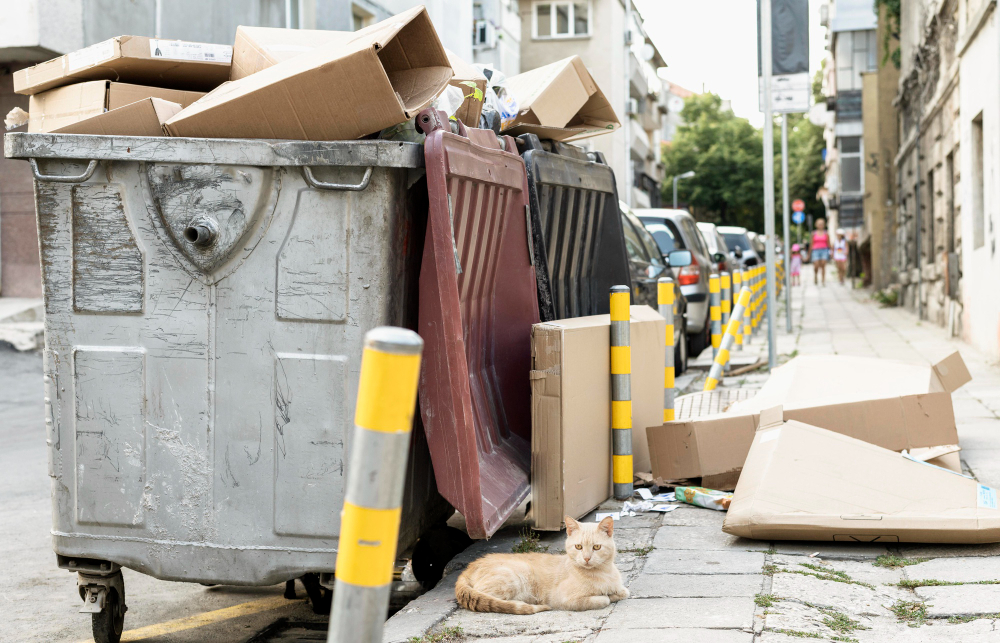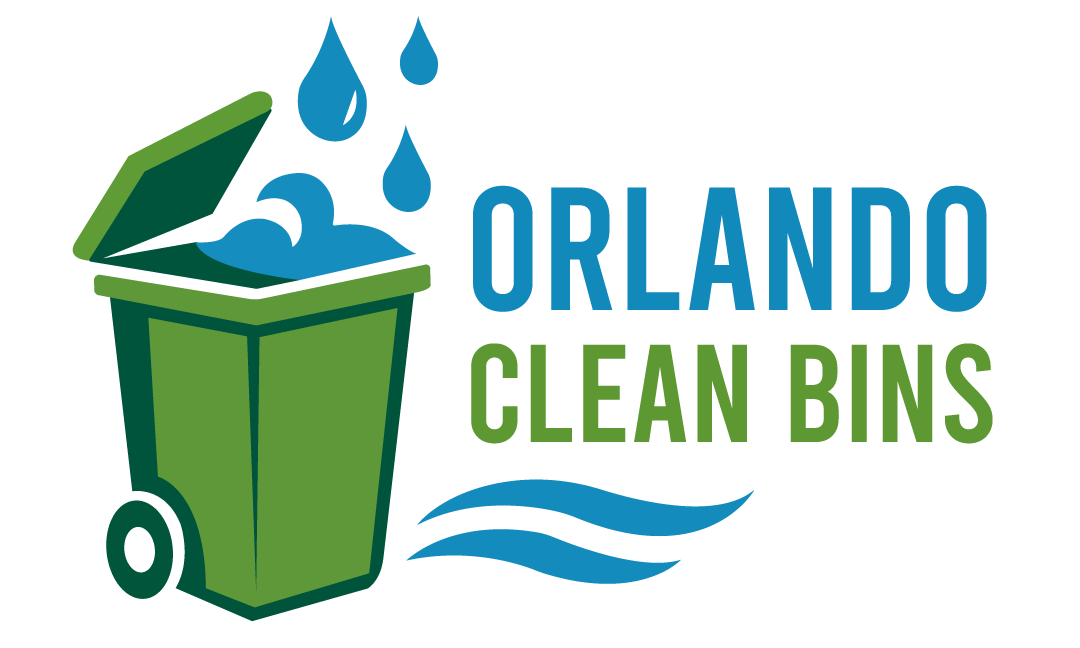The Hidden Dangers of Dirty Trash Bins You Didn’t Know About

Introduction
Trash bins are a staple in every home and business, yet they often become overlooked in our cleaning routines. While we focus on keeping our kitchens, bathrooms, and living areas spotless, the trash bin silently accumulates bacteria, mold, and other harmful microorganisms. Over time, a neglected trash bin can evolve from a minor inconvenience into a significant health hazard.
Dirty bins are more than just an unpleasant sight they can attract pests, spread disease, and create persistent odors that affect both indoor and outdoor environments. In this guide, we will explore the hidden dangers of unclean bins, offer practical cleaning solutions, and explain why professional trash bin cleaning services are an investment in health, hygiene, and property upkeep.
Why Trash Bins Become Problematic
Trash bins are designed to contain waste, but the combination of organic matter, liquid spills, and exposure to heat and sunlight creates the perfect environment for bacteria and pests. Food scraps that leak from bags, sugary drinks that spill, and wet waste accelerate decomposition. As these substances break down, they release foul odors and provide a breeding ground for flies, roaches, and other pests.
If neglected, these issues compound over time. Bins develop stains, sticky residues, and a lingering smell that can permeate homes and outdoor spaces. The longer a bin goes uncleaned, the more resistant it becomes to DIY cleaning methods, often requiring stronger cleaning solutions or professional intervention.
The Problems Caused by Dirty Trash Bins
Persistent Odors
One of the most immediate problems is odor. Dirty bins release pungent smells that can linger long after garbage pickup. The combination of rotting food, spilled liquids, and bacterial growth produces a scent that is both unpleasant and potentially harmful. In hot weather, odors intensify, drifting into homes, garages, and neighboring properties.
Pest Infestation
Dirty bins are magnets for pests. Flies, ants, wasps, rodents, and larger animals like raccoons and stray cats are drawn to the warm, nutrient-rich environment inside an unclean bin. Maggots are particularly common in bins with decaying food. These pests don’t just visit they breed, creating more extensive infestations and increasing the risk of disease transmission.
Health Hazards
Bacteria, viruses, and mold thrive in dirty bins. They can transfer to hands, pets, and surfaces, leading to foodborne illnesses, allergic reactions, and respiratory issues. Even the odors alone can cause headaches and nausea in sensitive individuals. For households with children, the risks are even more pronounced, as young ones are more susceptible to infections from contaminated surfaces.
Property and Community Impact
Unclean bins negatively affect property aesthetics and neighborhood appeal. Strong odors, stains, and pest activity can lead to complaints from neighbors or violations of local ordinances. Persistent neglect can also shorten the life of your bins, making replacements necessary sooner than expected.
How to Identify a Dirty Trash Bin
Warning Signs
You should consider immediate cleaning if you notice:
- Visible stains or discoloration inside the bin
- Persistent odors that remain after emptying
- Pests such as flies, ants, or visible larvae
- Sticky or crusty residue on the walls or lid
- Liquid pooling at the bottom of the bin
- Difficulty closing the lid due to buildup
- Complaints from neighbors about smell
Common Causes
Bins become contaminated for several reasons:
- Improper bagging or overfilled bags
- Tears in garbage bags causing leaks
- Direct disposal of liquids without containment
- Extended periods between cleanings
- Poor drainage inside or outside the bin
Hot weather accelerates decomposition, while wet waste and lack of ventilation amplify odor and bacterial growth.
Risks of Neglect
Ignoring dirty bins can lead to:
- Severe pest infestations
- Permanent odor absorption in bin plastic
- Structural damage to the bin
- Potential fines from local waste authorities
- Unpleasant living conditions for homeowners and neighbors
What You Need to Clean a Trash Bin
Essential Supplies
Water Source:
- Garden hose with adjustable spray nozzle
- Pressure washer (optional but highly effective)
- Buckets for backup water
Cleaning Agents:
- Dish soap (preferably degreasing)
- Baking soda (odor neutralizer)
- White vinegar (natural disinfectant)
- Household bleach (for heavy-duty sanitization)
Tools and Protection:
- Long-handled scrub brush or broom
- Sponges or cleaning cloths
- Rubber gloves and old clothing
- Towels or rags for drying
Optional Enhancements:
- Specialized bin liners
- Enzyme-based cleaners for organic waste
- Commercial deodorizing products
- Essential oils for natural scent
Step-by-Step Guide to Cleaning Trash Bins
Step 1: Initial Rinse
Start by rinsing the bin thoroughly with water. Spray the interior and exterior to remove loose debris. Focus on corners, seams, the lid, handles, and wheels. This initial rinse softens grime and makes scrubbing more effective.
Step 2: Apply Cleaning Agents
Sprinkle baking soda inside the bin, especially on stained or smelly areas. For tough odors, mix dish soap with warm water or spray vinegar directly on surfaces. Allow 10–15 minutes for the solution to work, breaking down grease and neutralizing odors.
Step 3: Scrubbing
Use a long-handled brush to scrub all surfaces:
- Start from the top and work down
- Pay attention to corners, seams, and the bottom
- Clean the lid, exterior surfaces, handles, and wheels
- Apply firm pressure and use circular motions
Step 4: Deep Cleaning
For heavily soiled bins, use a disinfectant. Mix 1 part bleach with 10 parts water, or use a commercial disinfectant. Let it sit for 10–20 minutes to kill bacteria and viruses.
Step 5: Final Rinse and Inspection
Rinse thoroughly with clean water. Check for remaining spots or odors and repeat cleaning if necessary. Water should run clear at the end.
Step 6: Drying and Deodorizing
Air-dry the bin in direct sunlight, which naturally sanitizes and reduces odor. Sprinkle a thin layer of baking soda at the bottom for ongoing odor control or use commercial odor absorbers.
Indoor vs. Outdoor Bin Cleaning
Indoor Bins:
- Require gentle cleaning suitable for indoor surfaces
- Focus on odor control and aesthetics
- Can be cleaned in sinks or bathtubs
- Use milder cleaning agents
- Require more frequent cleaning
Outdoor Bins:
- Can handle heavy-duty cleaning methods
- Require aggressive pest and odor control
- Can use pressure washers and bleach
- Require less frequent but thorough cleaning
Frequency:
- Indoor: weekly or as needed
- Outdoor: monthly during moderate weather, bi-weekly in hot months
Benefits of Regular Trash Bin Cleaning
Odor Elimination
Consistent cleaning prevents odor buildup and maintains a pleasant environment in and around your home.
Health Protection
Removing bacteria, mold, and viruses reduces risks of disease transmission and protects pets and family members.
Pest Prevention
Clean bins discourage pests like flies, ants, maggots, and larger animals from visiting or breeding nearby.
Property Value and Appearance
Well-maintained bins enhance curb appeal and prevent permanent stains or odors from forming.
Longevity of Bins
Regular cleaning prevents corrosion, extends the life of the bin, and makes future maintenance easier.
Maintenance and Prevention Tips
Proper Bagging
Use sturdy bags, double-bag wet waste, and avoid overfilling. Tie bags securely to prevent leaks.
Regular Cleaning Schedule
Create a routine based on bin usage and climate. Hot months may require more frequent cleaning.
Ongoing Odor Control
Use baking soda, dryer sheets, or essential oil sprays inside bins to maintain freshness between cleanings.
Proper Placement
Place bins on level ground with good drainage. Keep lids closed and consider partial shade to reduce heat buildup.
Waste Management Practices
Avoid disposing of liquids directly, rinse containers before disposal, and consider composting organic waste.
FAQ and Troubleshooting
What to do if maggots appear?
Pour boiling water over them and clean with a bleach solution. Ensure the bin dries completely before reuse.
How to handle extreme odors?
Combine vinegar, baking soda, and bleach treatments. Activated charcoal or commercial enzyme cleaners help persistent smells.
Environmental Considerations?
Use eco-friendly products when possible. Avoid letting chemicals enter storm drains; vinegar and baking soda are safe alternatives.
DIY vs Professional Services?
Homeowners can clean bins themselves, but professional services save time, ensure thorough sanitation, and are ideal for multiple bins or physical limitations.
When to replace a bin?
Replace bins with permanent odors, structural damage, or cracks. Proper maintenance extends lifespan, but heavily used bins may need earlier replacement.
Conclusion
Dirty trash bins are more than an eyesore they are a hidden source of bacteria, pests, and unpleasant odors that can affect your health and property. Regular cleaning, whether done at home or by professional services, ensures a hygienic, odor-free, and pest-resistant environment. By following proper cleaning techniques, using the right products, and maintaining a consistent schedule, you can prevent serious sanitation issues and protect your family and community.
Investing time in bin cleaning today saves stress, cost, and health risks tomorrow. Don’t let your trash bins turn into a hidden danger clean, sanitize, and maintain them regularly for a safer, fresher home.
